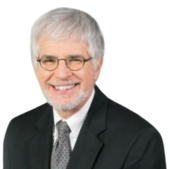
It’s been nearly two years since my previous ‘blue-sky beginnings’ post. Last fall, it didn’t seem like the right timing for that sort of message. However, despite the COVID-related problems and other challenging factors in our society, practical messages of hope and optimism are helpful. People are beginning new school semesters (virtual or otherwise), starting new entrepreneurial ventures, changing jobs, creating new products and services, and searching for different ways to live and work.
These ten ideas are adapted from blog posts I’ve written since the previous beginnings post. I hope you find these segments to be inspirational and useful, and also that you will be inspired to read the original posts!
And if you are concerned about your goals for the summer or the rest of the year, here is what {Katy} Milkman, the James G. Dinan Professor at The Wharton School of the University of Pennsylvania, says in her Q&A on the Behavioral Scientist books page:
“I think there’s an overemphasis on big goals. It’s not that goals aren’t useful. There’s tons of research showing that having a certain kind of goal—a clear, concrete, achievable goal, or a stretch goal—really is valuable. But it’s not solving a problem … You still have to deal with the challenges of procrastination, temptation, forgetting, self-efficacy, and whether or not your peers are supporting you.”
The Listening Path employs tools familiar from The Artist’s Way and other {Julia} Cameron books, such as morning pages, artist dates, and walks. And although it shares some of the themes of creativity/creation with those books, the intent here is to draw readers into deep attention to and engagement with our everyday environments, for benefits that go beyond creativity. Listening becomes its own reward, as we discover valuable things in our life that were there all along, but perhaps taken for granted or overlooked.
{James P.} Carse’s book {Finite and Infinite Games} begins: “There are at least two kinds of games. One could be called finite, the other infinite. A finite game is played for the purpose of winning, and infinite game for the purpose of continuing the play.”
“It was Carse’s book,” {Simon} Sinek writes on page 4 of The Infinite Game, “that first got me thinking beyond winning and losing, beyond ties and stalemates. The more I looked at our world through Carse’s lens of finite and infinite games, the more I started to see infinite games all around us, games with no finish lines and no winners.”
{Madelaine Claire Weiss}: “Research suggests that, left to its own devices, the mind wanders at least 50% of the time and I’ve seen it as high as 70%.
The bulk of this wandering is into past regrets and future worries, both of which can negatively affect our mood and productivity.
Deliberately anchoring our attention to the working surface (where the paint brush hits the woodwork, the soapy sponge hits the dish, the fingers hit the keys…) keeps our mind on the ball and prevents mistakes, adding hours to the day, and who doesn’t want that?
As for starting a project, once we see that we have simply placed our attention somewhere else instead—maybe somewhere that doesn’t make us as anxious as beginning a new project naturally could—it becomes easier to put our attention on the new challenge instead.
Ending a task is also a challenge for many. The brain does not multitask. The brain cannot think about the last task and the next task all at the same time. So it uses enormous amounts of energy going back and forth endlessly between the two, and then people wonder why they are so tired!
Releasing the attention from the previous activity—taking charge of the placement of the attention in general—frees up all of that wasted energy for much better things, and can make a huge difference in work and life.”
The origin story of {Jane} Jacobs holds multiple implications for people today, no matter their age, gender, or whether or not they live in a city. Well before today’s terminology, she was an influencer of the first order. She succeeded without a college degree, but with powers of self-learning that many would do well to emulate, whether or not they hold academic degrees. She also succeeded in an even more male-dominated era than today, and as a published author was somewhat of a late bloomer, given that The Death and Life of Great American Cities was published when she was 45.
Michelle Adams; Book: Little Wishes, quote: “When I’m not reading, you’ll hopefully find me in the mountains, but that could be about to change as I’m about to start a post grad in psychology. Like I said earlier, it’s never too late to do something you want to do.”
Caroline Leavitt; Book: With or Without You, quote: “I also wanted readers to know that you actually can, at any moment, through all sorts of ways, become a totally different person. You can create new memories to heal the old.”
B. Jeffrey Madoff; Book: Creative Careers: Making a Living with Your Ideas, quote: “Connect the dots you didn’t think connected before. Realize the importance of context. Recognize opportunities. Take a chance. Don’t be afraid to fail. Quiet the inner critic. Find your voice. Invest in yourself and your self-worth.”
Andrew Blauner; Book: The Peanuts Papers: Writers and Cartoonists on Charlie Brown, Snoopy & the Gang, and the Meaning of Life, quote: “Among its core beliefs are that life can be hard, perseverance is required, joy is fleeting but attainable, and imagination is essential.”
What I wrote about { Kerry Hannon} last year remains relevant today: “Kerry sets a great example for how more of us will need to operate now and in the future: thinking and acting entrepreneurially, developing niches of expertise, networking strategically, and searching for the widest possible avenues and types of outlets (online, and eventually again in person) for disseminating our work.”
My favorite summer books list invariably is from the Financial Times. FT contributor and novelist Susie Boyt writes about values useful to embrace in any season: “Negative Capability, Michele Roberts’ memoir of a novelist’s villainous year, was bracing and galvanising. Modestly billed as a book about failure it is more an account of how life’s setbacks are best countered by ever sterner levels of artistic engagement.”
The current era’s mixture of maximum uncertainty, interrupted careers. and lost jobs provides more reasons to read widely, in a variety of sources. In an interview with Tom {Butler-Bowdon} for my 2013 book, Create Your Future the Peter Drucker Way, he remarked that the “greatest differentiator in terms of personal success is to have a different sense of time from your peers. If you have a long-term view, you will be more willing to build something that takes decades, instead of going after a short-term result.”
{Syl Sobel & Jay Rosenstein} extensively interviewed such players-turned-famous coaches as Syracuse University’s Jim Boeheim (who played for the {Scranton} Miners and is on the book’s cover), and Temple University’s John Chaney, who passed away in January, at 89.
Chaney’s death brings out another factor of why the story of the book {Boxed Out of the NBA: Remembering the Eastern Professional Basketball League} has been told not a minute too soon. This is a generation of people now in their 60s, 70s, 80s, and 90s. Many died years ago, and some, like Chaney, quite recently, after the book went to press. For instance, another player quoted by Syl and Jay, who like Boeheim went from Syracuse University to the Miners, Rich Cornwall, passed away February 2 at 74. A day earlier, Valentine “Val” Reid, a Syracuse teammate of Boeheim and Cornwall’s who also played for the Miners, passed away at 77.
